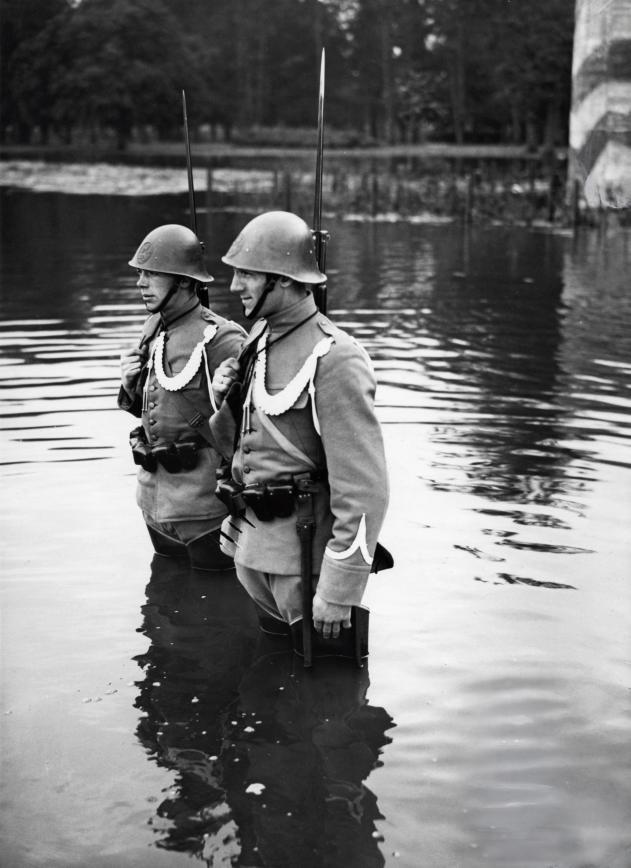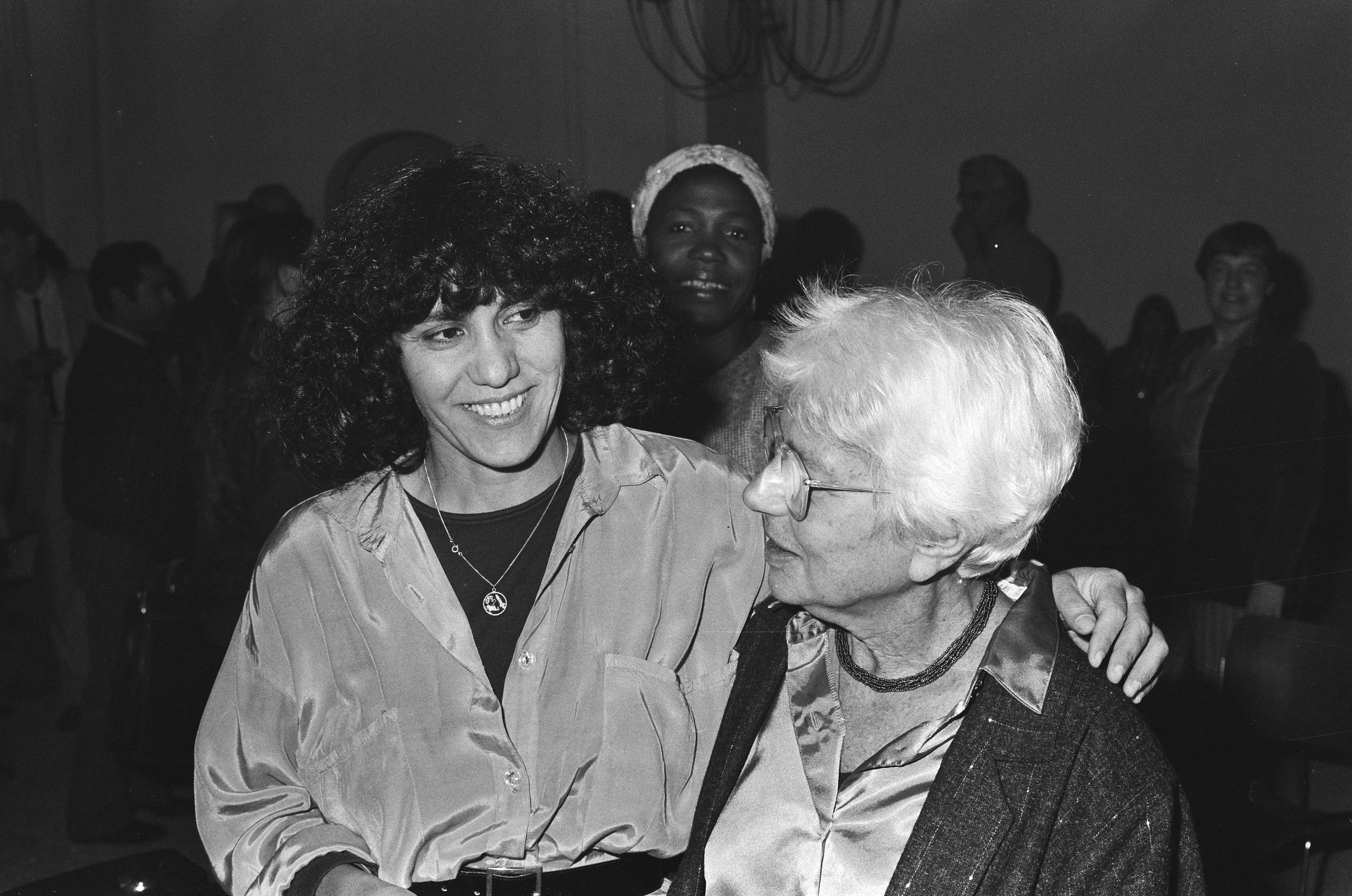|
Maria Austria
Maria Austria (née Marie Karoline Oeststreicher; 19 March 1915 in Karlovy Vary – 10 January 1975 in Amsterdam) was an Austro-Dutch photographer who is considered an important post-war photographer of the Netherlands, and was a theatre and documentary photographer. Her neorealistic, humanist photo reportage was exhibited at the Museum of Modern Art in 1953, the Stedelijk Museum Amsterdam in 1958, the Van Gogh Museum in 1975, and the Joods Historisch Museum in 2001. Career 1915 to 1936 Marie Karoline Oestreicher grew up in what was then the Bohemian monarchy Karlsbad, the daughter of Austrian doctor Karl, who died young (1864 – March 1915) and his wife Clara, née Kisch (1871–1945), sibling of the older Felix (1894–1945) and Lisbeth (1902–1989). The Jewish family was middle-class in an intellectual and artistic environment.Dörte Nicolaisen: "BauhäuslerInnen im niederländischen Exil." In: She had Austrian citizenship until 1918, and then Czechoslovakian citizenshi ... [...More Info...] [...Related Items...] OR: [Wikipedia] [Google] [Baidu] |
Karlovy Vary
Karlovy Vary (; , formerly also spelled ''Carlsbad'' in English) is a spa town, spa city in the Karlovy Vary Region of the Czech Republic. It has about 49,000 inhabitants. It is located at the confluence of the Ohře and Teplá (river), Teplá rivers. Karlovy Vary is named after Charles IV, Holy Roman Emperor and the King of Bohemia, who founded the city in the 14th century. The site of numerous hot springs, the city grew into a spa resort in the 19th century and was a popular destination for the European aristocracy and other luminaries. Karlovy Vary's rapid growth was brought to an end by the outbreak of World War I. After the Velvet Revolution in 1989, Karlovy Vary once again became a major tourist destination. Karlovy Vary is the most visited spa town in the Czech Republic. In 2021, the city became part of the transnational UNESCO World Heritage Site under the name "Great Spa Towns of Europe" because of its spas and architecture from the 18th through 20th centuries. The histo ... [...More Info...] [...Related Items...] OR: [Wikipedia] [Google] [Baidu] |
Wehrmacht
The ''Wehrmacht'' (, ) were the unified armed forces of Nazi Germany from 1935 to 1945. It consisted of the German Army (1935–1945), ''Heer'' (army), the ''Kriegsmarine'' (navy) and the ''Luftwaffe'' (air force). The designation "''Wehrmacht''" replaced the previously used term (''Reich Defence'') and was the manifestation of the Nazi regime's efforts to German rearmament, rearm Germany to a greater extent than the Treaty of Versailles permitted. After the Adolf Hitler's rise to power, Nazi rise to power in 1933, one of Adolf Hitler's most overt and bellicose moves was to establish the ''Wehrmacht'', a modern offensively-capable armed force, fulfilling the Nazi regime's long-term goals of regaining lost territory as well as gaining new territory and dominating its neighbours. This required the reinstatement of conscription and massive investment and Military budget, defence spending on the arms industry. The ''Wehrmacht'' formed the heart of Germany's politico-military po ... [...More Info...] [...Related Items...] OR: [Wikipedia] [Google] [Baidu] |
German Invasion Of The Netherlands
The German invasion of the Netherlands (), otherwise known as the Battle of the Netherlands (), was a military campaign, part of Case Yellow (), the Nazi German invasion of the Low Countries (Belgium, Luxembourg, and the Netherlands) and France during World War II. The battle lasted from 10 May 1940 until the surrender of the main Dutch forces on 14 May. Dutch troops in the province of Zealand continued to resist the Wehrmacht until 17 May, when Germany completed its occupation of the whole country. The invasion of the Netherlands saw some of the earliest mass paratroop drops, to occupy tactical points and assist the advance of ground troops. The German Luftwaffe used paratroopers in the capture of several airfields in the vicinity of Rotterdam and The Hague, helping to quickly overrun the country and immobilise Dutch forces. After the devastating Nazi bombing of Rotterdam by the Luftwaffe on 14 May, the Germans threatened to bomb other Dutch cities if the Dutch forces refu ... [...More Info...] [...Related Items...] OR: [Wikipedia] [Google] [Baidu] |
Rivierenbuurt
Rivierenbuurt is a neighbourhood of Amsterdam, Netherlands. The neighbourhood is situated in the eastern part of the Amsterdam borough of Amsterdam-Zuid, bordered by the river Amstel to the east, the ''Boerenwetering'' canal in the west, the ''Amstelkanaal'' in the north and the A10 motorway in the south. In 2013, the Rivierenbuurt had approximately 28,400 residents. The Rivierenbuurt was built in the 1920s as a primarily middle-class residential area, part of the Plan Zuid urban expansion programme designed by Dutch architect Hendrik Petrus Berlage. The neighbourhood features many fine examples of Amsterdam School architecture. The Dutch word Rivierenbuurt translates as 'Rivers Neighbourhood'; most streets in the area are named after rivers in the Netherlands. Until World War II the area had a sizable Jewish population which included Anne Frank and her family, who lived at ''Merwedeplein'' square until they went into hiding in the secret annex located in the old city centre ... [...More Info...] [...Related Items...] OR: [Wikipedia] [Google] [Baidu] |
Eva Besnyö
Éva Besnyő (29 April 1910 – 12 December 2003) was a Dutch-Hungarian photographer who participated in the ''Nieuwe Fotografie'' (New Photography) movement. Biography Born in Budapest, Besnyö was brought up in a well-to-do Jewish home. In 1928, she started to study photography at József Pécsi's studio where she also served an apprenticeship.Marion Beckers, "Eva Besnyö" Jewish Women Encyclopedia. Retrieved 25 March 2013. In 1930, at the age of 20, she moved to Berlin where she first worked for advertising photographer René Ahrlé before working on Photojournalism, photoreportages with the press photographer Peter Weller. She became part of the social and political circle of intellectuals which included György Kepes, Joris Ivens, László Moholy-Nagy, Otto Umbehr and Robert Capa. In 1931, she opened her own stu ... [...More Info...] [...Related Items...] OR: [Wikipedia] [Google] [Baidu] |
John Fernhout
John is a common English name and surname: * John (given name) * John (surname) John may also refer to: New Testament Works * Gospel of John, a title often shortened to John * First Epistle of John, often shortened to 1 John * Second Epistle of John, often shortened to 2 John * Third Epistle of John, often shortened to 3 John People * John the Baptist (died ), regarded as a prophet and the forerunner of Jesus Christ * John the Apostle (died ), one of the twelve apostles of Jesus Christ * John the Evangelist, assigned author of the Fourth Gospel, once identified with the Apostle * John of Patmos, also known as John the Divine or John the Revelator, the author of the Book of Revelation, once identified with the Apostle * John the Presbyter, a figure either identified with or distinguished from the Apostle, the Evangelist and John of Patmos Other people with the given name Religious figures * John, father of Andrew the Apostle and Saint Peter * Pope John (disambigu ... [...More Info...] [...Related Items...] OR: [Wikipedia] [Google] [Baidu] |
Joris Ivens
Georg Henri Anton "Joris" Ivens (18 November 1898 – 28 June 1989) was a Dutch documentary filmmaker. Among the notable films he directed or co-directed are '' A Tale of the Wind'', ''The Spanish Earth'', ''Rain'', ''...A Valparaiso'', '' Misère au Borinage'' (''Borinage''), '' 17th Parallel: Vietnam in War'', '' The Seine Meets Paris'', '' Far from Vietnam'', ''Pour le Mistral'' and '' How Yukong Moved the Mountains''. Early life and education Born Georg Henri Anton Ivens on 18 November 1898 at Nijmegen, Netherlands, into a wealthy family, Ivens went to work in one of his father's photo supply shops and from there developed an interest in film. Under the direction of his father, he completed his first film at 13. He studied first at the Rotterdam School of Economics (1916–17, 1920–21), before serving as a field artillery lieutenant in World War I. In 1922 and 1923 he studied photochemistry in Germany. Returning to Amsterdam in 1926, he joined the family business, but left ... [...More Info...] [...Related Items...] OR: [Wikipedia] [Google] [Baidu] |
Libelle (Dutch Magazine)
''Libelle'' (from the Latin "libellus", meaning book or writ) is a weekly women's magazine published in Amsterdam, Netherlands. It has been in circulation since 1934. History and profile ''Libelle'' was first published on 13 April 1934 by NV Uitgeverij. The magazine was part of VNU and was published by VNU Tijdschriften for several years. In 2001 the magazine became part of Sanoma and was published by Sanoma Media Netherlands B.V. on a weekly basis. It has its headquarters in Amsterdam. Following the German occupation of the Netherlands during World War II the editors of ''Libelle'' endorsed support of the German forces. In the late 1960s another women's magazine, '' Beatrijs'', merged with ''Libelle''. During the 1990s ''Libelle'' was among the Dutch publications which functioned as an opinion leader in political and health-related issues. The target audience of ''Libelle'' is women aged between 30–55 most of whom are average Dutch women. The weekly mostly features articles ... [...More Info...] [...Related Items...] OR: [Wikipedia] [Google] [Baidu] |
Antisemitism
Antisemitism or Jew-hatred is hostility to, prejudice towards, or discrimination against Jews. A person who harbours it is called an antisemite. Whether antisemitism is considered a form of racism depends on the school of thought. Antisemitic tendencies may be motivated primarily by negative sentiment towards Jewish peoplehood, Jews as a people or negative sentiment towards Jews with regard to Judaism. In the former case, usually known as racial antisemitism, a person's hostility is driven by the belief that Jews constitute a distinct race with inherent traits or characteristics that are repulsive or inferior to the preferred traits or characteristics within that person's society. In the latter case, known as religious antisemitism, a person's hostility is driven by their religion's perception of Jews and Judaism, typically encompassing doctrines of supersession that expect or demand Jews to turn away from Judaism and submit to the religion presenting itself as Judaism's suc ... [...More Info...] [...Related Items...] OR: [Wikipedia] [Google] [Baidu] |
Nazi Germany
Nazi Germany, officially known as the German Reich and later the Greater German Reich, was the German Reich, German state between 1933 and 1945, when Adolf Hitler and the Nazi Party controlled the country, transforming it into a Totalitarianism, totalitarian dictatorship. The Third Reich, meaning "Third Realm" or "Third Empire", referred to the Nazi claim that Nazi Germany was the successor to the earlier Holy Roman Empire (800–1806) and German Empire (1871–1918). The Third Reich, which the Nazis referred to as the Thousand-Year Reich, ended in May 1945, after 12 years, when the Allies of World War II, Allies defeated Germany and entered the capital, Berlin, End of World War II in Europe, ending World War II in Europe. After Hitler was appointed Chancellor of Germany in 1933, the Nazi Party began to eliminate political opposition and consolidate power. A 1934 German referendum confirmed Hitler as sole ''Führer'' (leader). Power was centralised in Hitler's person, an ... [...More Info...] [...Related Items...] OR: [Wikipedia] [Google] [Baidu] |




